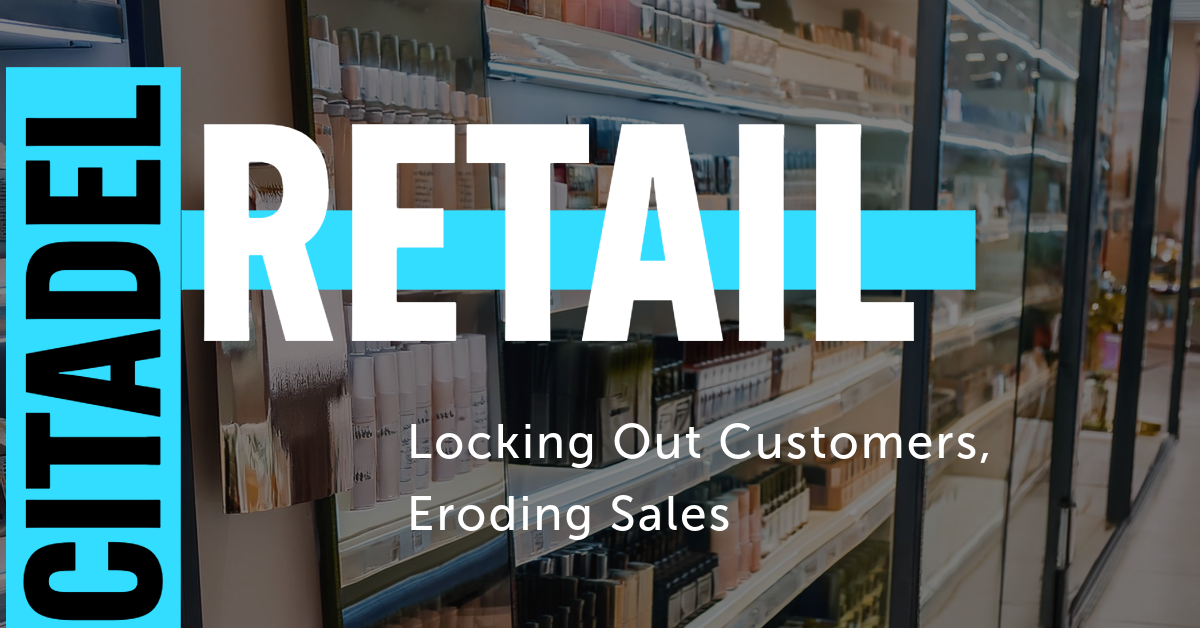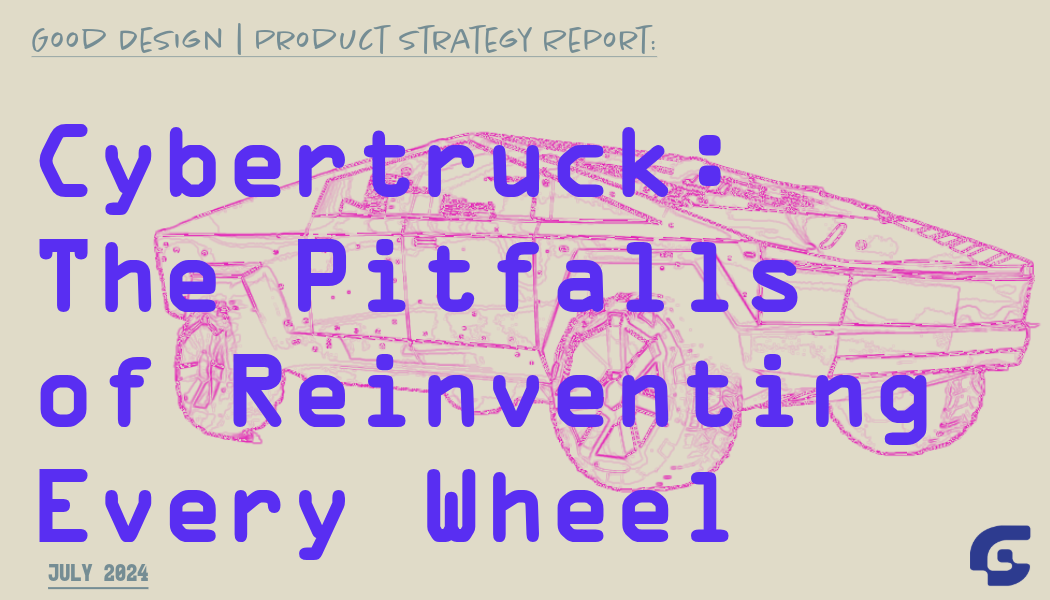Citadel Retail: Locking Out Customers, Eroding Sales
Good Ideas Only • 2024-08-14
Major retailers are facing backlash from customers due to the implementation of anti-theft measures that lock up common products, leading to frustration and decreased sales. The analysis calls for a reevaluation of these strategies, emphasizing the need for a balance between security and customer convenience.
In recent years, major retailers such as CVS, Target, and Walgreens have implemented a controversial strategy of locking merchandise behind acrylic barriers to combat rising theft and organized retail crime. Once reserved for securing high-value or regulated items like cellphones and cigarettes, these plastic shields now hold hostage commonplace products like toiletries and cleaning supplies. Customers must locate and wait for a store employee with the appropriate keys to access these locked items. This practice has metastasized across numerous retail chains, transforming entire aisles into untouchable product galleries armored in plexiglass. While retailers assumed this approach would deter theft, maintain stocked shelves, and preserve the in-store experience, the reality has been quite different, leading to frustrated customers, reduced sales, and overwhelmed employees.
GIO's strategy analysis uses DVFU and WMBT frameworks. DVFU examines a product strategy's desirability, viability, feasibility, and usability from the user's perspective. WMBT identifies critical assumptions for strategy success, validates them through experiments, and iteratively refines the strategy based on findings. This approach reduces the risk of failure, ensures continuous alignment with customer needs, and instills confidence in strategy adaptability.
Our analysis of the retailers' locked merchandise strategy focuses on three key components: Assumptions, Realities, and Counter-Assumptions. We start by examining the initial assumptions underpinning the strategy, then confront these assumptions with the realities that unfolded. Crucially, our analysis articulates Counter-Assumptions that reframe the strategy from the customer's perspective.
Building on this analysis, we present a sample (mini) product strategy document that outlines a more rigorous approach to evaluating and implementing the locked merchandise initiative. We provide clear hypotheses and a set of metrics to measure the strategy's impact. Our analysis offers a framework for retailers to reevaluate their locked merchandise strategy and provides a data-driven approach to validate assumptions and continuously optimize the strategy.
Evaluating Retail Strategy to Lock Up Merchandise
Desirability Assumptions Made
- Locking up merchandise would deter theft and organized retail crime
- This would maintain a positive customer experience by keeping stores open and shelves stocked
Reality:
- The strategy backfired, leading to frustrated customers, reduced sales, and overburdened employees
- The arbitrary nature of which products were locked up created a negative shopping experience
Counter Assumption:
- Retailers should have assumed that customers value convenience, spontaneity, and ease of access to products. Locking up merchandise would likely discourage in-person shopping and drive customers to online alternatives.
Viability Assumptions Made:
- Locking up products was the most viable solution to combat theft without closing stores
Reality:
- The strategy proved costly to implement and maintain
- It caused long-term damage to sales and brand reputation
Counter Assumption
- Retailers should have assumed that the financial and operational costs of implementing and maintaining the locked-up system would outweigh the potential benefits of reduced theft.
Feasibility Assumptions Made:
- Retailers claimed to have sophisticated inventory systems to determine high-theft risk products.
Reality:
- The arbitrary nature of locked products suggests retailers' ability to target lock-ups is limited.
Counter Assumption:
- Retailers should have assumed that their data and analytics capabilities were not robust enough to make informed, targeted decisions about which products to lock up.
Usability Assumptions Made:
- The benefit of reducing theft would outweigh the inconvenience to customers.
Reality:
- The strategy created a frustrating and uninviting shopping experience
- It discouraged impulse purchases and product browsing
Counter Assumption:
- Retailers should have assumed that the negative impact on the customer experience would significantly outweigh any potential benefits of reduced theft.
Mini Product Strategy: Locking Merchandise
Desirability
Hypothesis: Locking up merchandise will deter theft and organized retail crime, prevent store closures, and maintain a positive customer experience.
Embedded Assumptions:
- WMBT: Customers will tolerate the inconvenience of locked-up products in exchange for a safer shopping environment.
- WMBT: Customers will not significantly change their shopping behavior due to the locked-up merchandise.
- Metrics
- Customer satisfaction scores
- Net Promoter Score (NPS)
- Store traffic pre and post-implementation
Viability
Hypothesis: Locking up products is the most viable solution to combat theft without closing stores.
Embedded Assumptions:
- WMBT: The cost of implementing and maintaining the locked-up system will be offset by reducing theft-related losses.
- WMBT: Locked-up merchandise will not significantly impact overall sales and profitability.
- Metrics
- Theft reduction rates
- Cost savings
- Overall sales and profit margins
- Store traffic pre and post-implementation
- Average ticket amount pre- and post-implementation
- Volume sales of locked merchandise pre- and post-implementation
Feasibility
Hypothesis: Retailers have sophisticated inventory management systems that accurately identify high-risk products that must be locked up.
Embedded Assumptions:
- WMBT: Retailers can reliably determine which products are most susceptible to theft based on their data and analytics.
- WMBT: The process of locking up and unlocking products can be efficiently managed by store staff without significantly impacting operations.
- Metrics
Leading Indicators:
- Out-of-stock rates for locked products: Stock issues can signal employee failure to restock locked merchandise on time
- Customer request wait times: Long wait times for locked product access points to understaffing or operational bottlenecks
- Abandoned baskets: Customers giving up on purchasing locked items due to poor user experience
Qualitative Insights:
- Employee feedback: Surveying or interviewing staff on the challenges they face with the locking system can surface issues early
- Complaints: Analyzing customer feedback around locked products can identify pain points and risks to loyalty
- Store operations audits: On-the-ground evaluation of the locking process execution can reveal breakdowns and best practices
Usability
Hypothesis: The inconvenience caused to customers by locked-up products will be outweighed by the benefits of reduced theft.
Embedded Assumptions:
- WMBT: Customers will be willing to wait for assistance and navigate the locked-up aisles without significantly changing their shopping behavior.
- WMBT: The negative impact on the customer experience will not drive a substantial shift towards online shopping.
- Metrics
- Customer wait times
- online sales growth
- overall store traffic
Measurement (OKRs):
- Reduce theft-related losses by 30% within the first 12 months of implementation
- Maintain customer satisfaction scores above 80% and NPS above 50%
- Limit the increase in online sales to no more than 10% in the first year
- Ensure that labor hours required for unlocking products do not exceed 5% of total store labor hours
The GIO Team
About The Good Design | Center of Excellence Newsletter
For digital leaders aiming to drive growth through human-centric innovation, the Good Design Center of Excellence newsletter offers an inside look at GIO's approach. Through digestible videos and articles, you'll gain strategic insights to bridge the gap between vision and execution.





